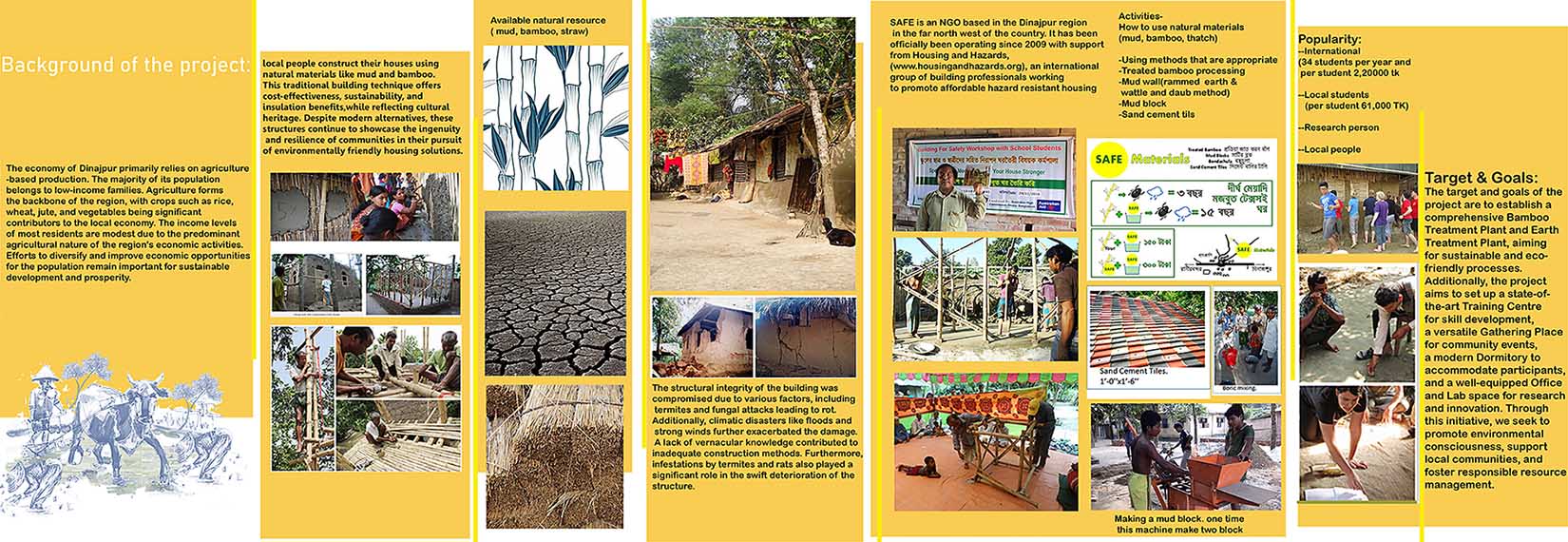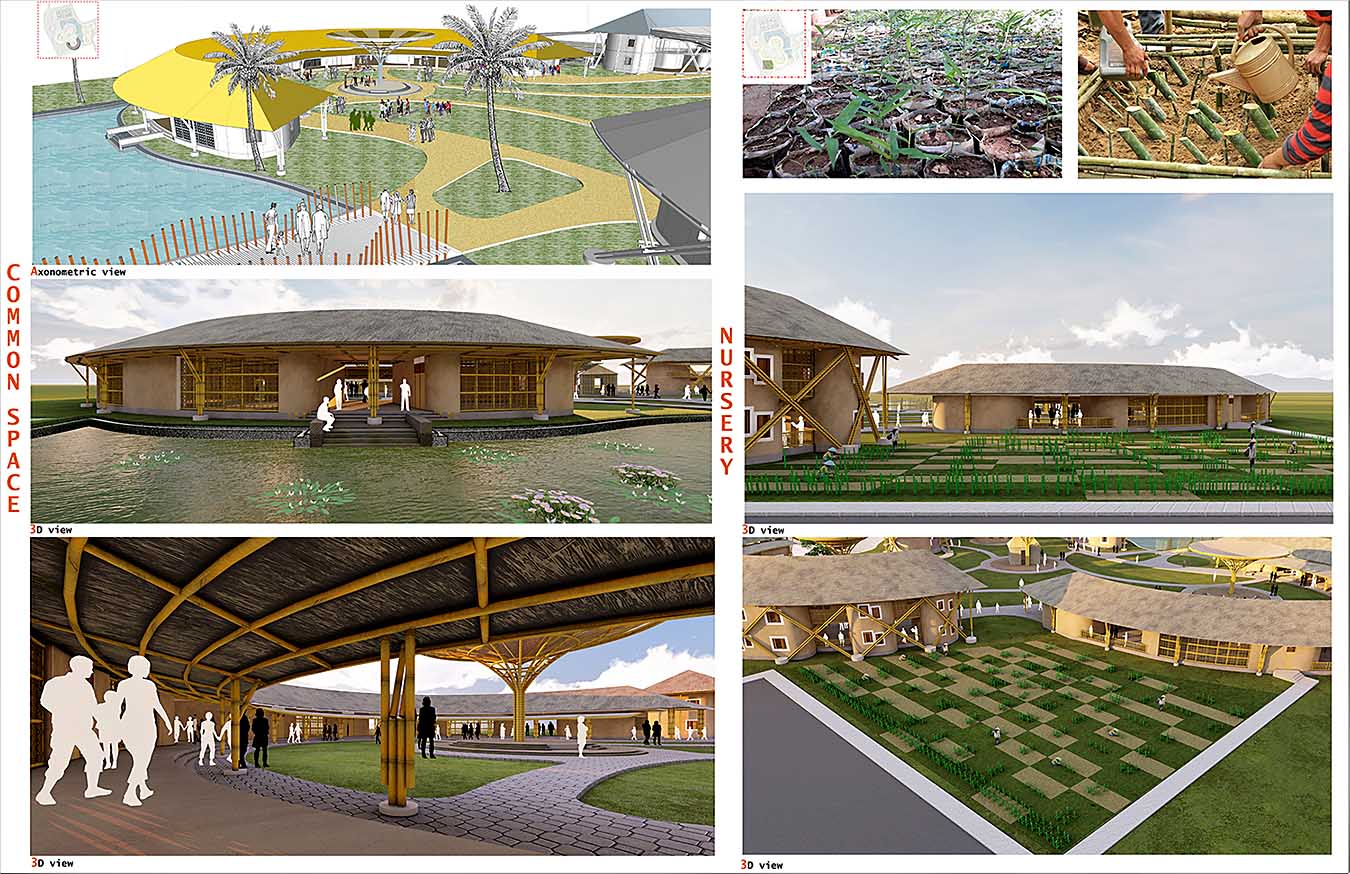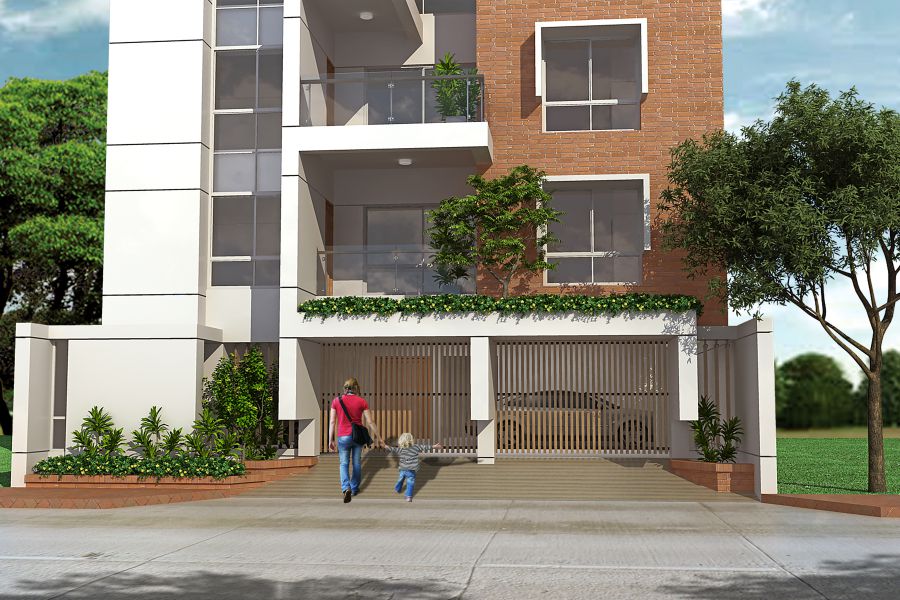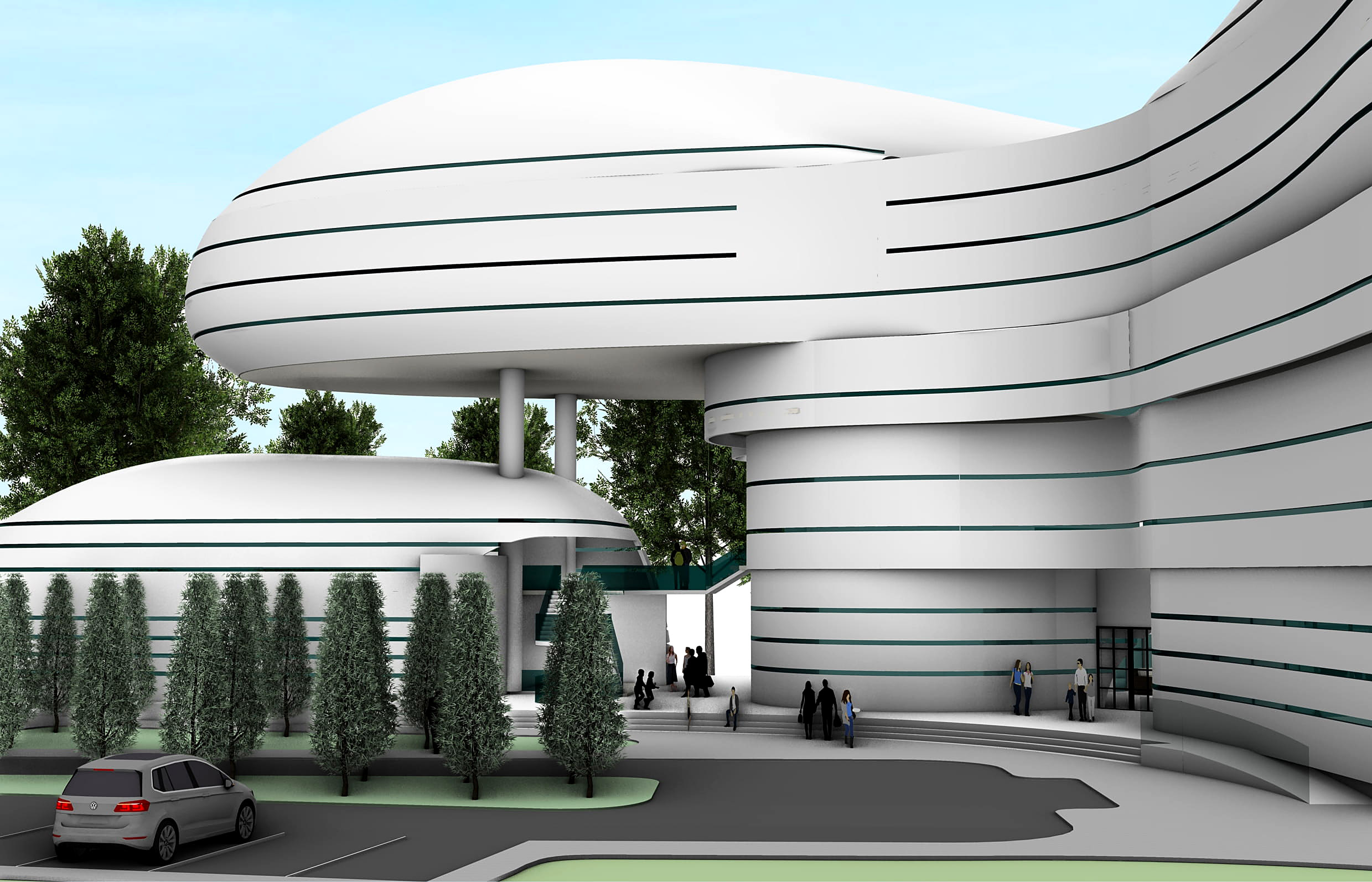A Vernacular Architectural Learning Centre
In response to the escalating global environmental challenges, SAFE NGO recognized the need for sustainable architectural solutions tailored to the local context of Dinajpur. “The Vernacular Architectural Learning Centre” is designed to fulfil this vision. The project is conceptualized as a catalyst for change that will help foster a deep understanding of vernacular architecture in Dinajpur, Bangladesh.
The project aims to design a space that can inspire the conservation of vernacular knowledge and provide opportunities for developing vernacular construction techniques. Spaces are designed to inspire researchers, architects, students and local people to work together and learn from each other. The designer had to compromise the aesthetic of the masterplan to showcase the versatility of vernacular construction techniques. The emphasis was given to exploring vernacular aesthetics in different areas of this open learning center. This initiative strives to empower individuals and guide them towards a low-carbon and environmentally conscious future through its comprehensive educational programs, practical demonstrations and community engagement.
Challenges Aspect:
SAFE NGO has been working on this site for over a decade and they realized early on that conserving vernacular wisdom is necessary to make the shelters disaster risk resilient. The form of vernacular architecture is often humble, yet it possesses an inherent charm and authenticity that is difficult to replicate. This project's challenge was to capture this region's aesthetic architectural traits and replicate them in the designed learning center. The designed spaces had to stem from their humble roots yet achieve grandness to showcase the versatility of vernacular techniques. The site area constraint also posed unique challenges. Different types of activities demanded different forms to be explored and some aesthetic demand in the masterplan scale was compromised to make room for functional demand.
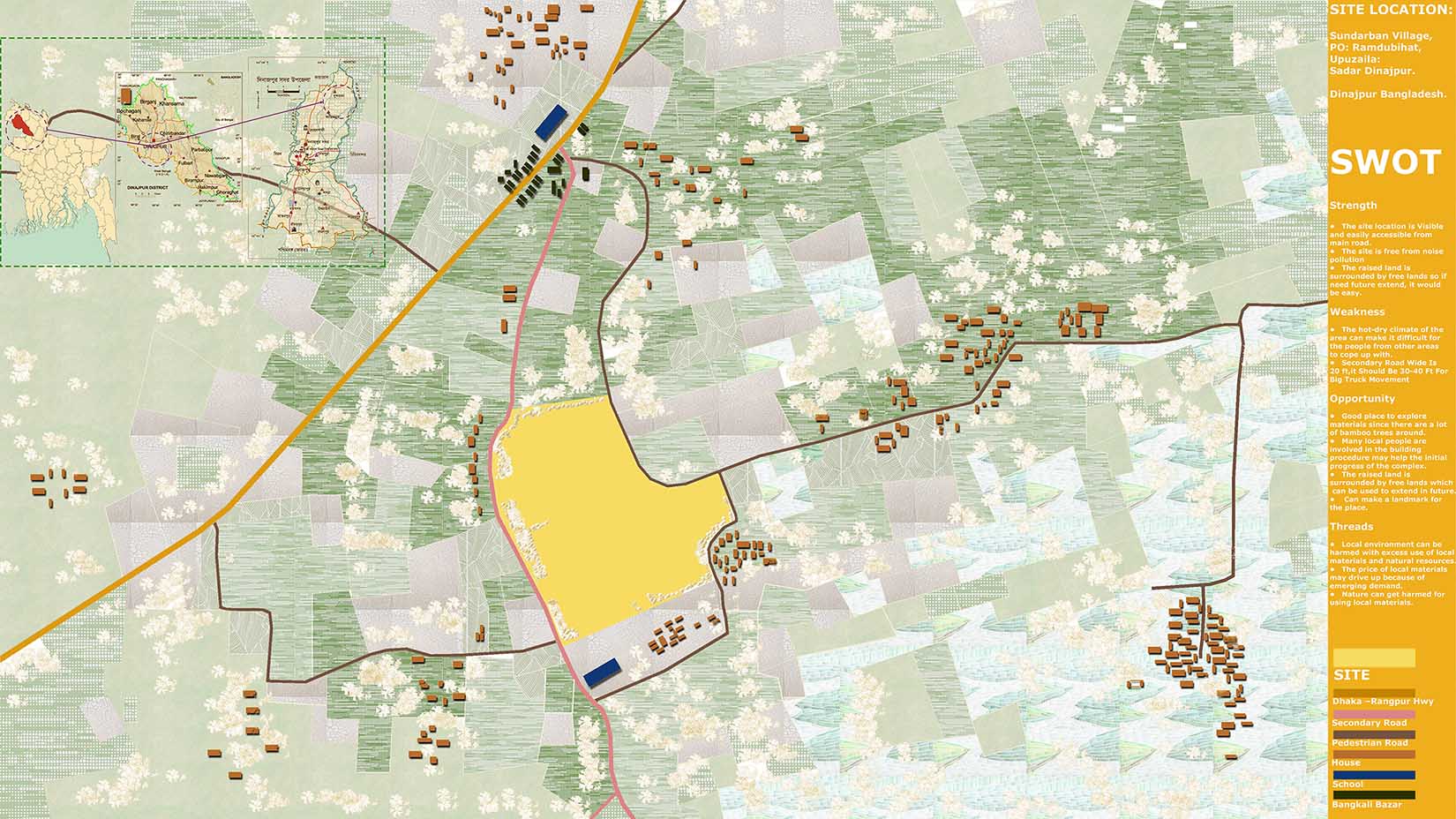
Site © Tanbir Hasan | DUET
Concept:
To create an open learning space for sharing knowledge and developing vernacular construction techniques. The project aims to design a space that can inspire conservation of vernacular knowledge and provide opportunities for developing vernacular construction techniques. Spaces in this learning centre are designed to inspire Researchers, Architects, Students and Local People to work together and learn from each other. The emphasis was given on creating an open learning centre that is integrated with nature and ensures protection of natural resources.
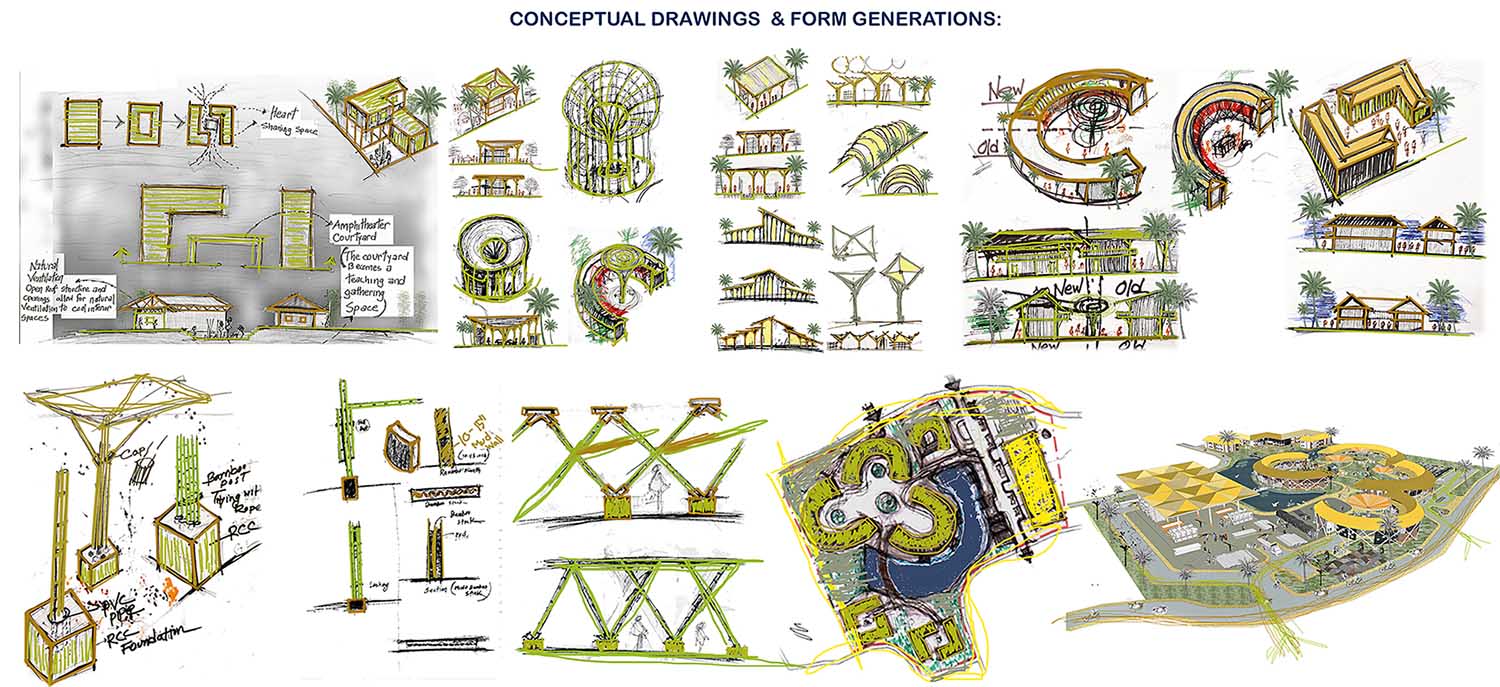
Concept © Tanbir Hasan | DUET
Program:
1. Office & Lab: Office Space Used for Work, Share Document & Test, Experiment
2. Education & Workshop: Classes, Study & Real Scale Model Making.
3. Library: Study Purpose, Materials & General Study
4. Dormitory: Sleep, Rest, Eat & Cook
5. Common Space: Exhibition, Interaction, Sharing, Program, Seminar, Workshop, Food Service, Prayer Space & Shop
6. Treatment Plant: Bamboo Treatment & Earth Treatment
7. Nursery: Bamboo Nursery
Master Plan:
The Masterplan development followed the steps of rural home construction. Earth was excavated from the site to form a beautiful pond and to collect materials for building the structures. Different forms were placed around the pond respecting the existing landscape.
The masterplan reflects the beauty of a Bangladeshi rural homestead. It recreates the magic of living in nature, embracing natural elements and connecting with our roots. Inspired by the local culture of using open-to-sky courtyards for daily tasks, the structures are placed to form internal courtyards where different activities can occur.
The vernacular aesthetic was sought in this project. The designer found it in the inclusion of diverse shapes, local materials, natural colour palettes, contrasting volumes, introverted spaces, retaining natural landscape patterns and in the scope for cultural practice and social bonding.
This masterplan’s aesthetic is representing a community's identity, traditions, and values. Each structure tells a story, carrying the collective memories and aspirations of the people who built them. It captures the essence of a place and its people, providing a glimpse into the rich tapestry of human creativity and adaptation.
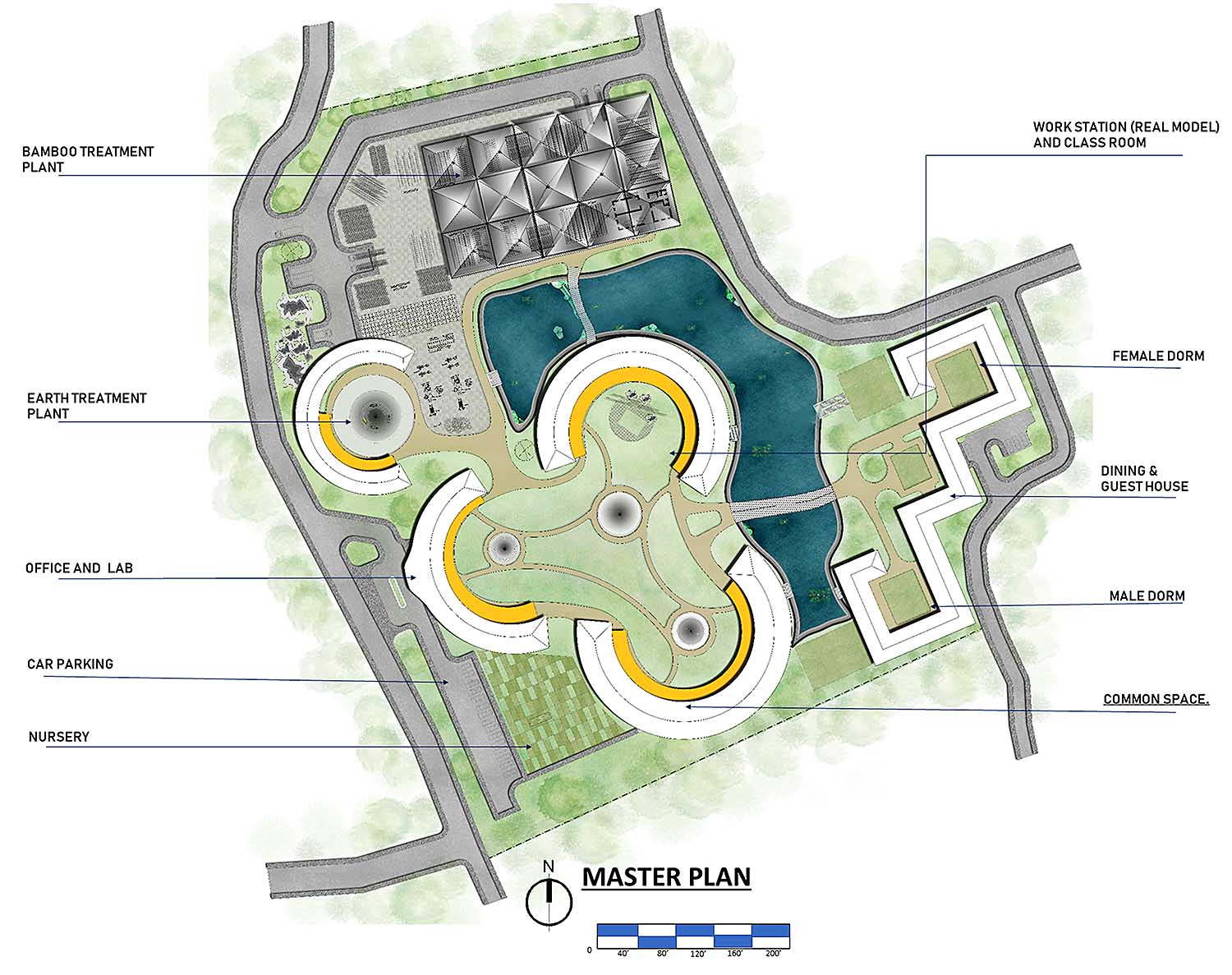
Master Plan © Tanbir Hasan | DUET
Bamboo Treatment Plant:
The functional demand of the bamboo treatment plant required a rectangular layout. The roof is a superstructure made of Bamboo that represents the potential of bamboo as a structural material. The structure is designed to be a landmark facility. In addition to training, this treatment plant will meet the local needs of treated bamboo and contribute to local economy. Muli (Non-structural bamboo) and Borak (Structural Bamboo) will be treated here.
Bamboo Treatment Cycle:
1. Bamboo reception and preliminary inspection
2. Individual quality control
3. Cutting station / Cleaning station
4. Drilling station
5. Seasoning & Drying
6. Treatment tanks
7. Vertical drying racks
8. Horizontal drying racks
9. Storage and Loading for dissemination to distribution points
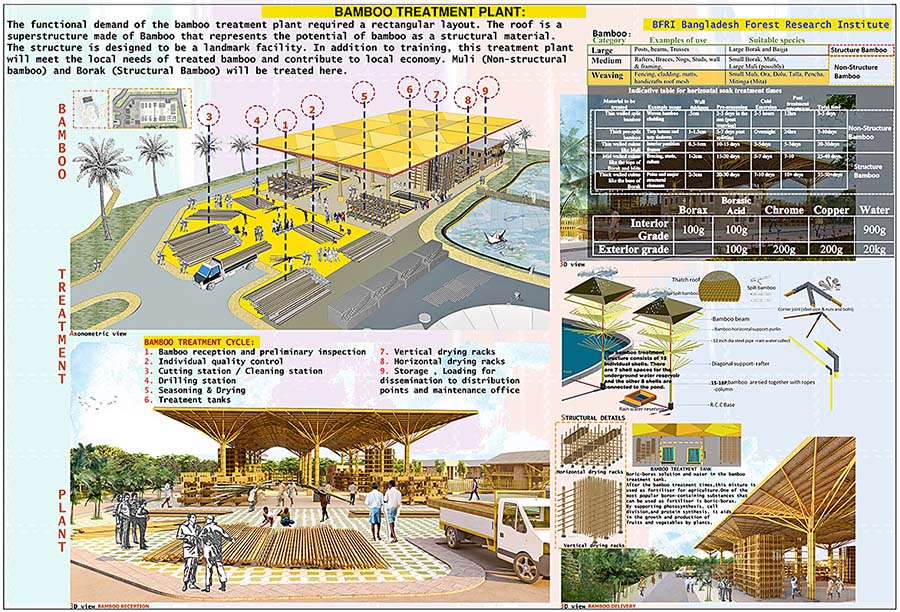
Bamboo Treatment Plant © Tanbir Hasan | DUET
Earth Treatment Plant:
The earth treatment plant is a combination of interesting spaces. It is designed to be semi-circular, similar to the office and classrooms. It has spaces for exploring rammed-earth techniques. The circular shading protects the mixing station where buffaloes mix cement, mud, straw and sand. The structure also provides drying and storage spaces for sundried bricks. Students and researchers can also explore wattle and daub techniques here. This treatment plant is a space to learn about the beauty and strength of the natural materials.
Focus On:
1. Rammed Earth
2. Adobe or Sun-Dried Brick
3. Wattle & Daub Method
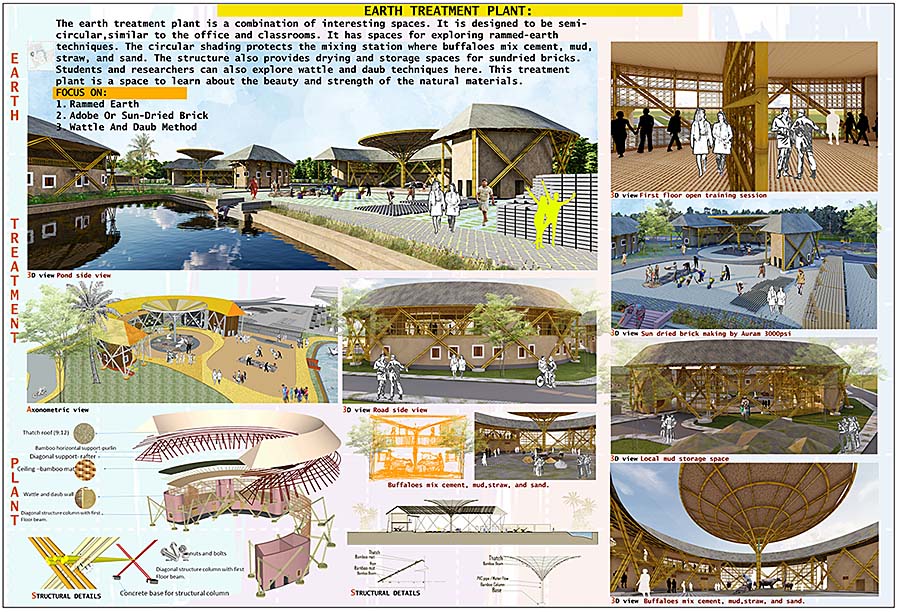
Earth Treatment Plant © Tanbir Hasan | DUET
Work Station [Real Model] and Class Room:
This learning centre will provide opportunities for hands-on experience and teach techniques for honing the beauty of vernacular practices through the Build & Design Course. It will offer 14 days of separate Bamboo and Earth courses and a combined Bamboo-Earth course spanning 21 days. Training will be provided for local masons, architects, national and international students and researchers.
The learning centre is designed with spaces that can accommodate the activities of the courses. Emphasis was given to creating an open learning centre that is integrated with nature and protects natural resources.
Bamboo Earth Course (21 days):
1st day: Office Activity & The Story of Indigenous Materials
2nd To 4th day: Bamboo Harvesting & Treatment
5th to 6th day: Bamboo Carpentry.
7th To 8th day: Mud treatment and Mud technique
9th To 10th day: Mud block and sun-dried brick
11th to 12th day: Our Bamboo & Mud World (Dipshikha Campus and Jagan Babur Math)
12th To 14th day: Built with Earth (Full scale construction-wattle and daub method, rammed earth, sun dried brick)
15th day: Downtimes (Kantajir Temple, Ramsagar & Sundarban Village)
16th to 18th day: Built with Bamboo (Full scale bamboo construction)
19th to 20th day: Built with composite materials (Earth, Bamboo, Wood, steel)
21th day: Certificate Giving
Bamboo Course (14 days):
1st day: Office Activity & The Story of Indigenous Materials
2nd To 4th day: Harvesting & Treatment
5th To 6th day: Our Bamboo World (Dipshikha Campus and Jagan Babur Math)
7th To 8th day: Bamboo Carpentry
9th day: Downtimes (Kantajir Temple, Ramsagar & Sundarban Village)
10th To 13th day: Built with Bamboo (Full scale bamboo construction)
14th day: Certificate Giving
Earth Course (21 days):
1st day: Office Activity & The Story of Indigenous Materials
2nd To 4th day: Mud treatment and Mud technique
5th To 6th day: Our Mud World (Dipshikha Campus and Jagan Babur Math)
7th To 8th day: Mud block and sun-dried brick
9th day: Downtimes (Kantajir Temple, Ramsagar & Sundarban Village)
10th To 13th day: Built with Earth (Full scale construction-wattle and daub method, rammed earth, sun dried brick)
14th day: Certificate Giving
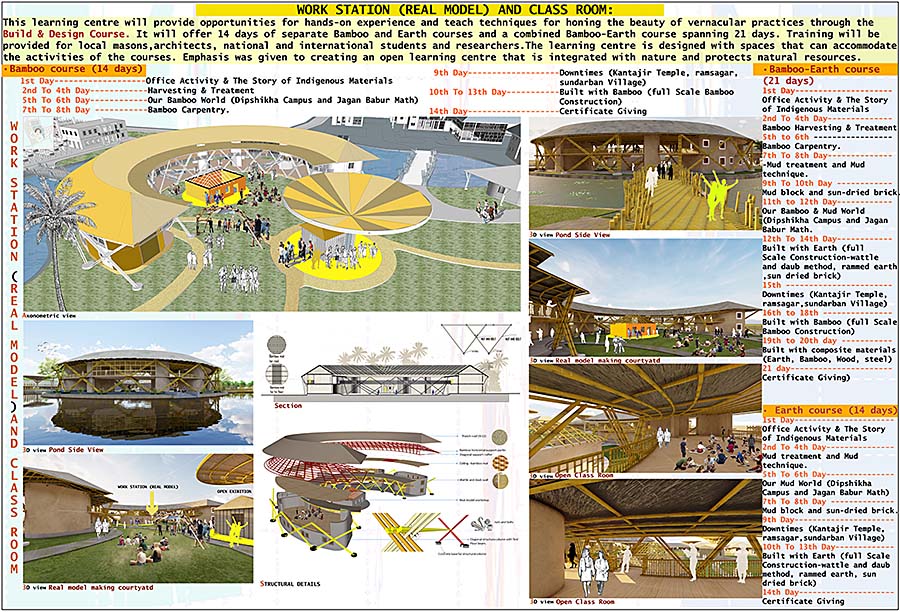
Work Station & Class Room © Tanbir Hasan | DUET
Nursery:
• Bamboo nursery
In Bangladesh, several bamboo species are prized for their strength and cultivated in villages.
These Include Borak(large/Small), baijja, muti, muli(large/Small), ora, dola, talla, pencha, mitinga(Mita). This nursery will sell different species of bamboo. This research lab is also for local farmers to explore and discover bamboo growth opportunities in limited land.
Multipurpose Hall:
The multipurpose hall is designed to be a place that can be used by local people, they can share their Own creativity. For villagers, it works as an awareness centre.
Exhibition Space:
In the exhibition space, villagers can display various products. Students can exhibit their works here. There are two types of exhibition space, one is the indoor exhibition another is the open exhibition. The open exhibition is used for scaled model display.
Office and Lab:
The semi-circular structures represent the aesthetic sculptural quality of earth construction. These unique forms represent the opportunity of exploring vernacular material using modern forms. The image below visualises the entrance of the institute.
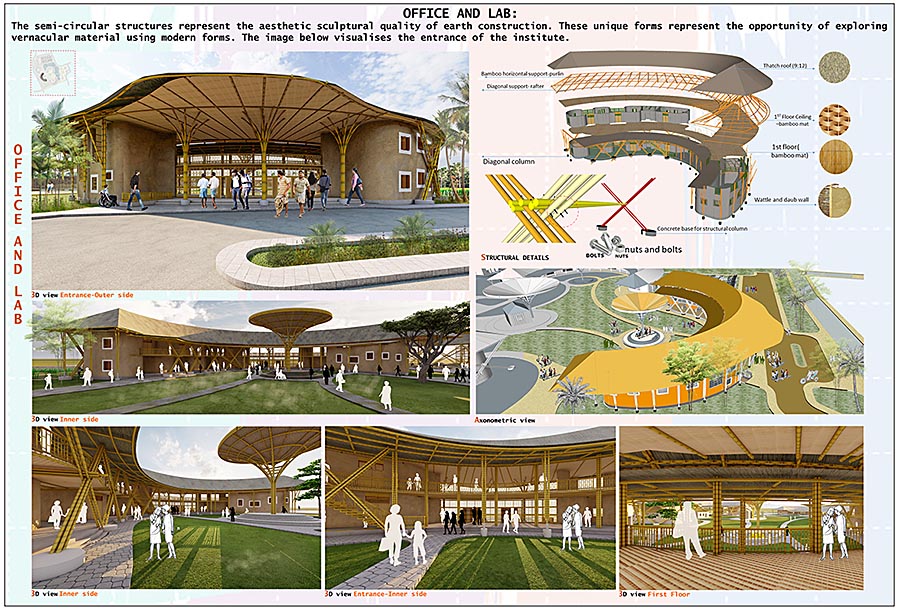
Office & Lab © Tanbir Hasan | DUET
Dormitory:
Dormitory: Sleep, Rest, Eat & Cook.
Dormitory users:
• Local and international students.
• Guest
Bangladeshi rural housing layout influenced the dormitory's shape. This structure embodies the beauty of living around a courtyard, surrounded by nature overlooking the pond. The walls use rammed earth construction techniques and the roof uses sand cement tiles.
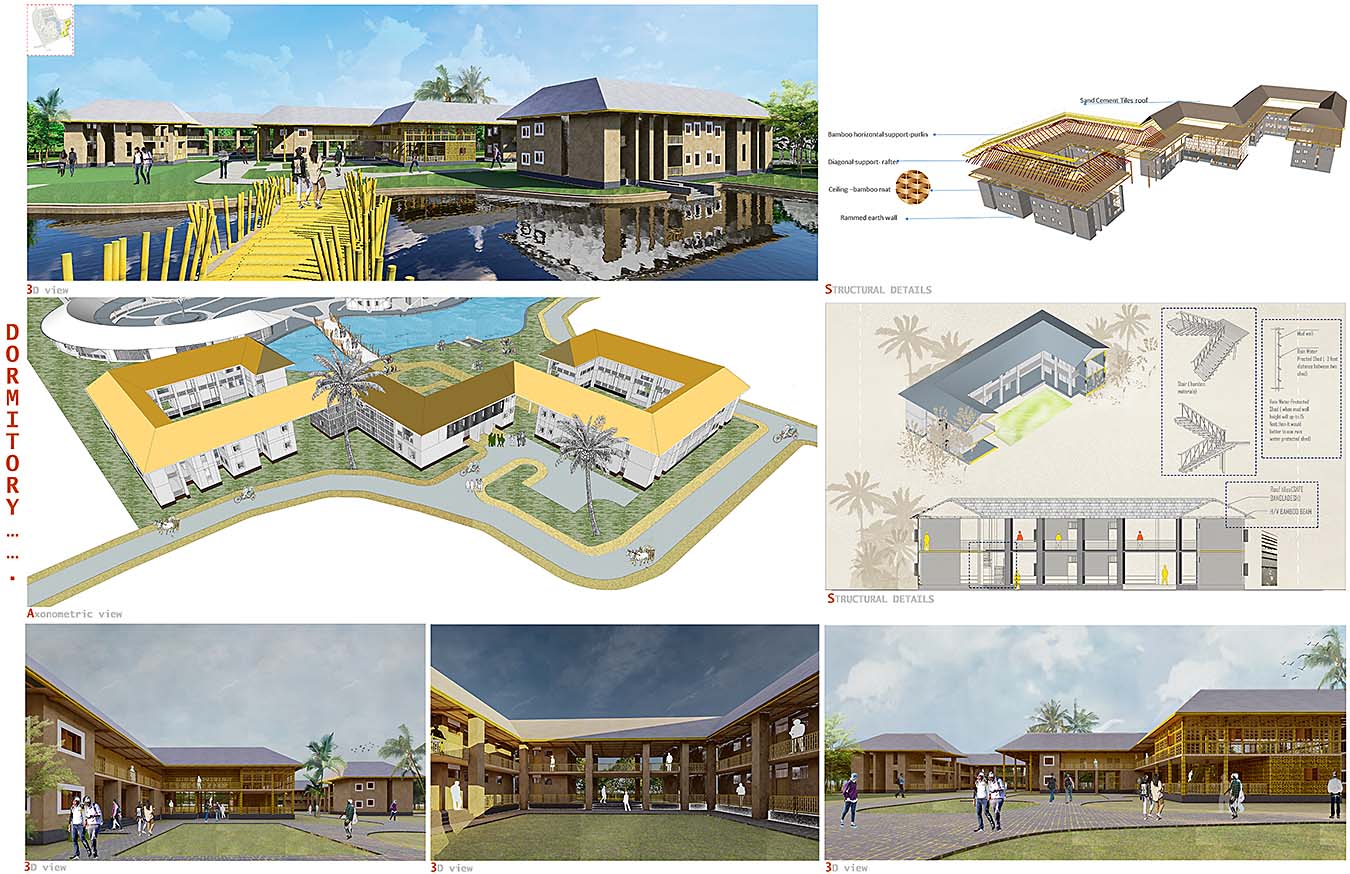
Dormitory © Tanbir Hasan | DUET
Beauty of This Project:
The beauty of this project stems from the wisdom, ingenuity, and craftsmanship of generations past. The conscious pursuit of vernacular aesthetics was present from its inception to execution. The contrasting shape of structures demand attention and create visual tension. Yet their bold presence represents the honesty of vernacular knowledge. The vernacular aesthetic thrives in its simplicity. However, these structures and spaces within them are designed to provide unique experiences with vernacular materials. The construction is complicated, spaces are diverse and use promise a better and sustainable future. The most arduous negotiation occurred when all the unique shapes demanded their spaces in the masterplan, and the overall aesthetic in the Bird’s eye view was compromised. But this space is not to be viewed from above. This will be experienced by local people, students, researchers and architects. The beauty lies in its symbiotic relationship with nature, its seamless integration into the landscape, its cultural significance and its sustainable design principles.
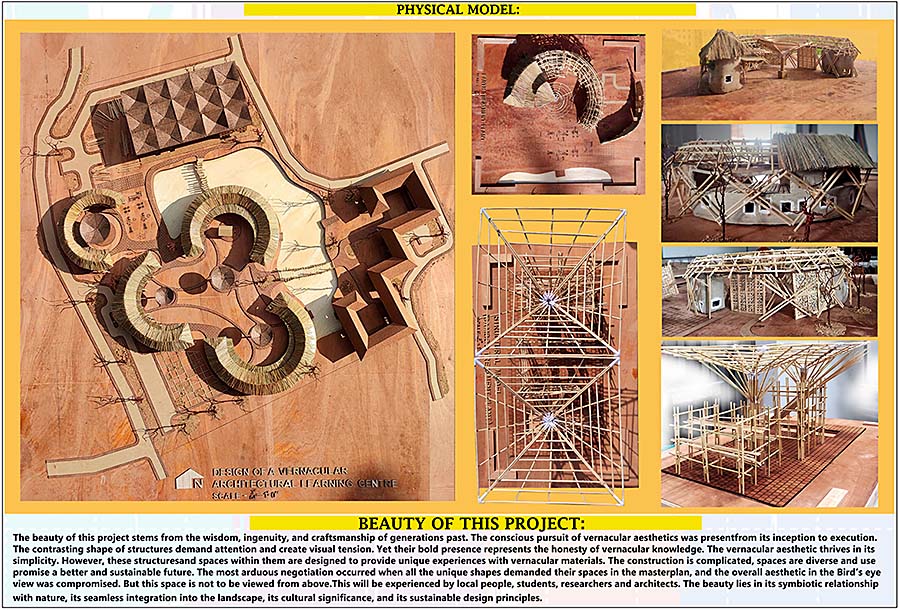
Model © Tanbir Hasan | DUET
SIMILAR POST
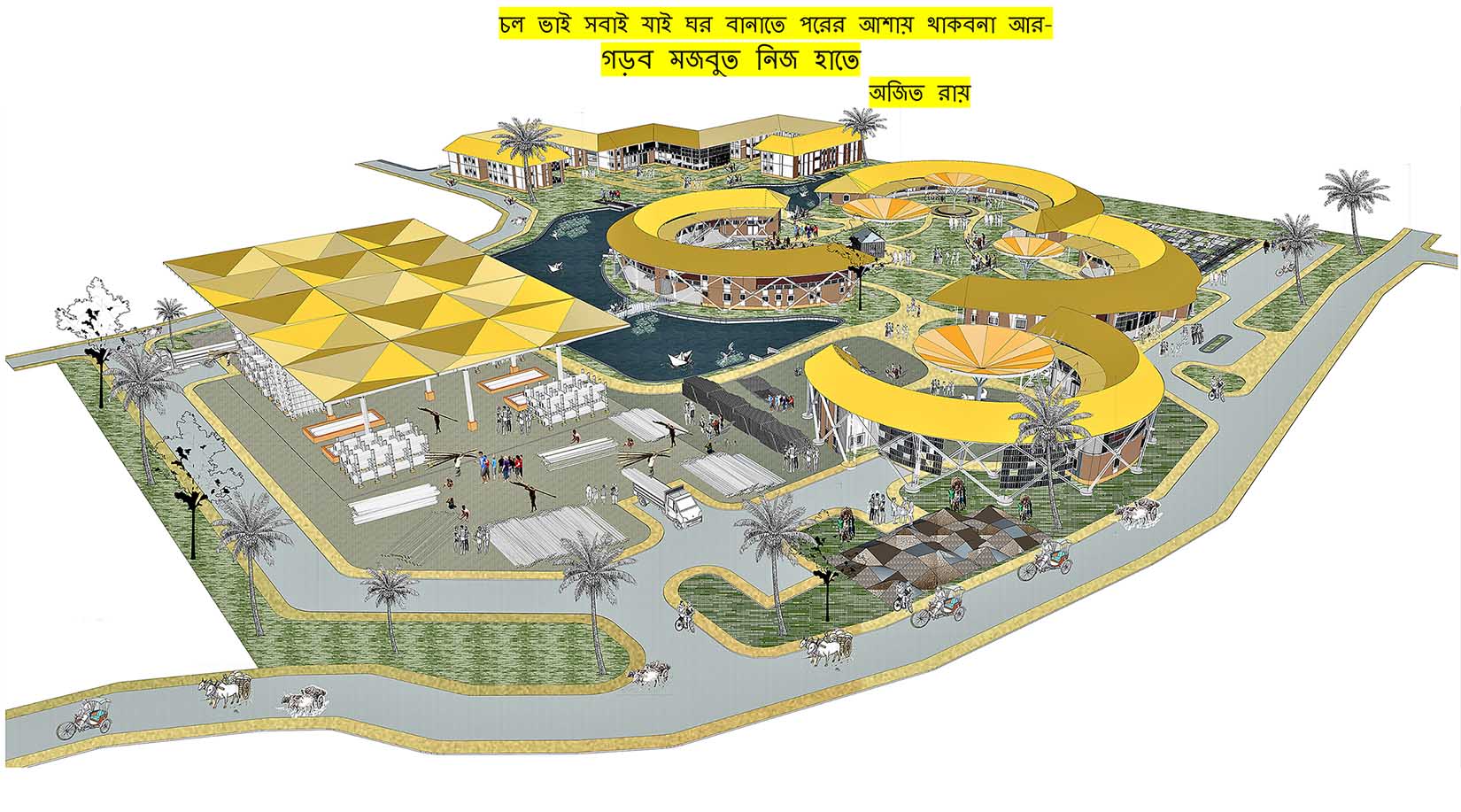
A Vernacular Architectural Learning Centre
Lorem, ipsum dolor sit...
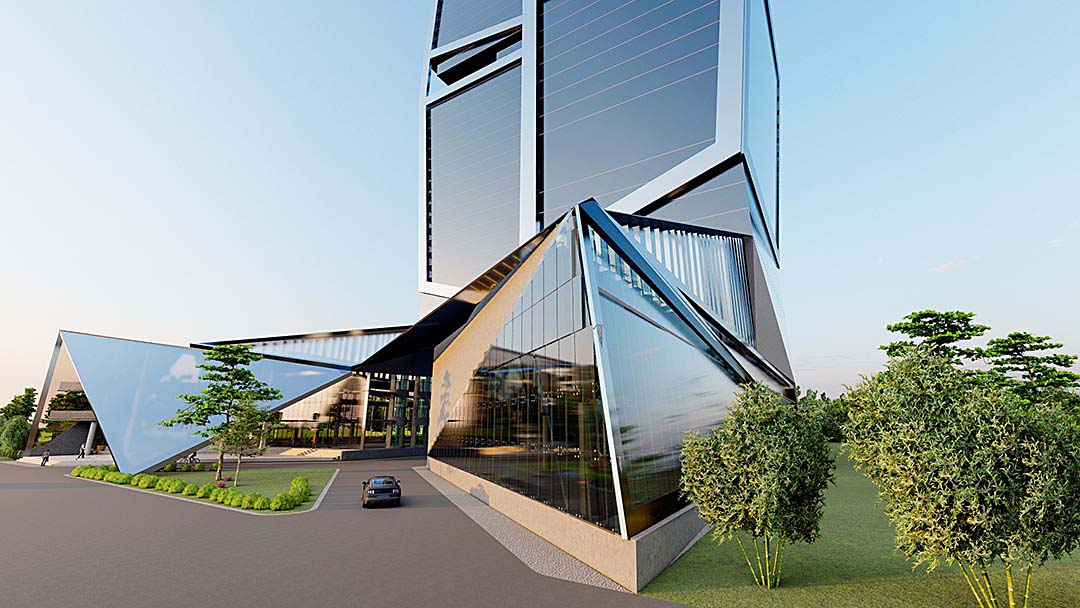
Design of A Commercial High-rise Building
Lorem, ipsum dolor sit...
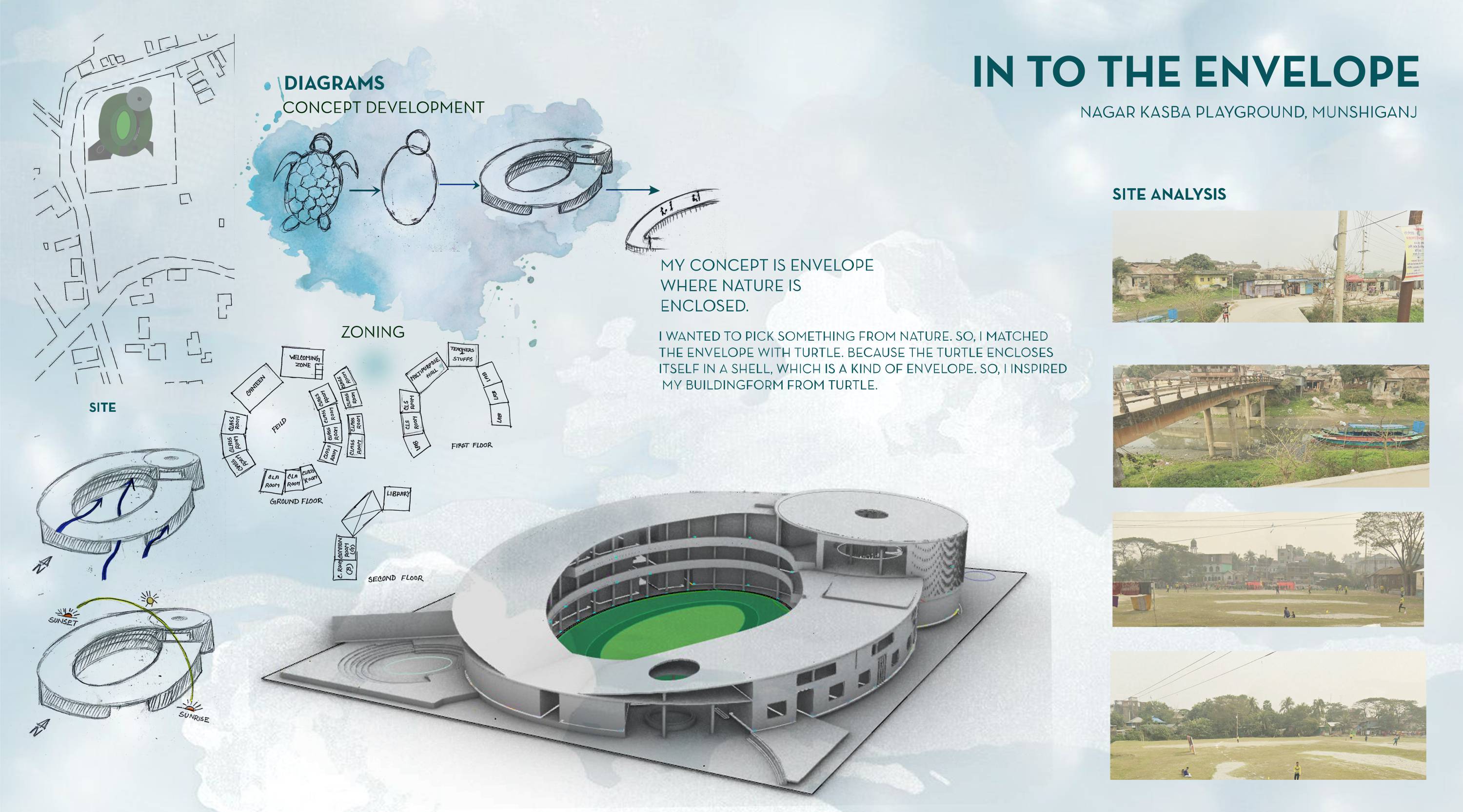
Design of a Traditional Community School
Lorem, ipsum dolor sit...

Design of An Exhibition Center
Lorem, ipsum dolor sit...
RECENT UPDATES
A Vernacular Architectural Learning Centre
23 November, 2023
Design of A Commercial High-rise Building
19 November, 2023
Design of a Traditional Community School
25 September, 2023
Design of An Exhibition Center
10 September, 2023
MOST VISITED
Design of A Commercial High-rise Building
19 November, 2023 || Total views: 28
Paramount Concord
7 August, 2023 || Total views: 19
Iqbal Residence
7 August, 2023 || Total views: 18
Design of E-commerce Museum
7 August, 2023 || Total views: 13
